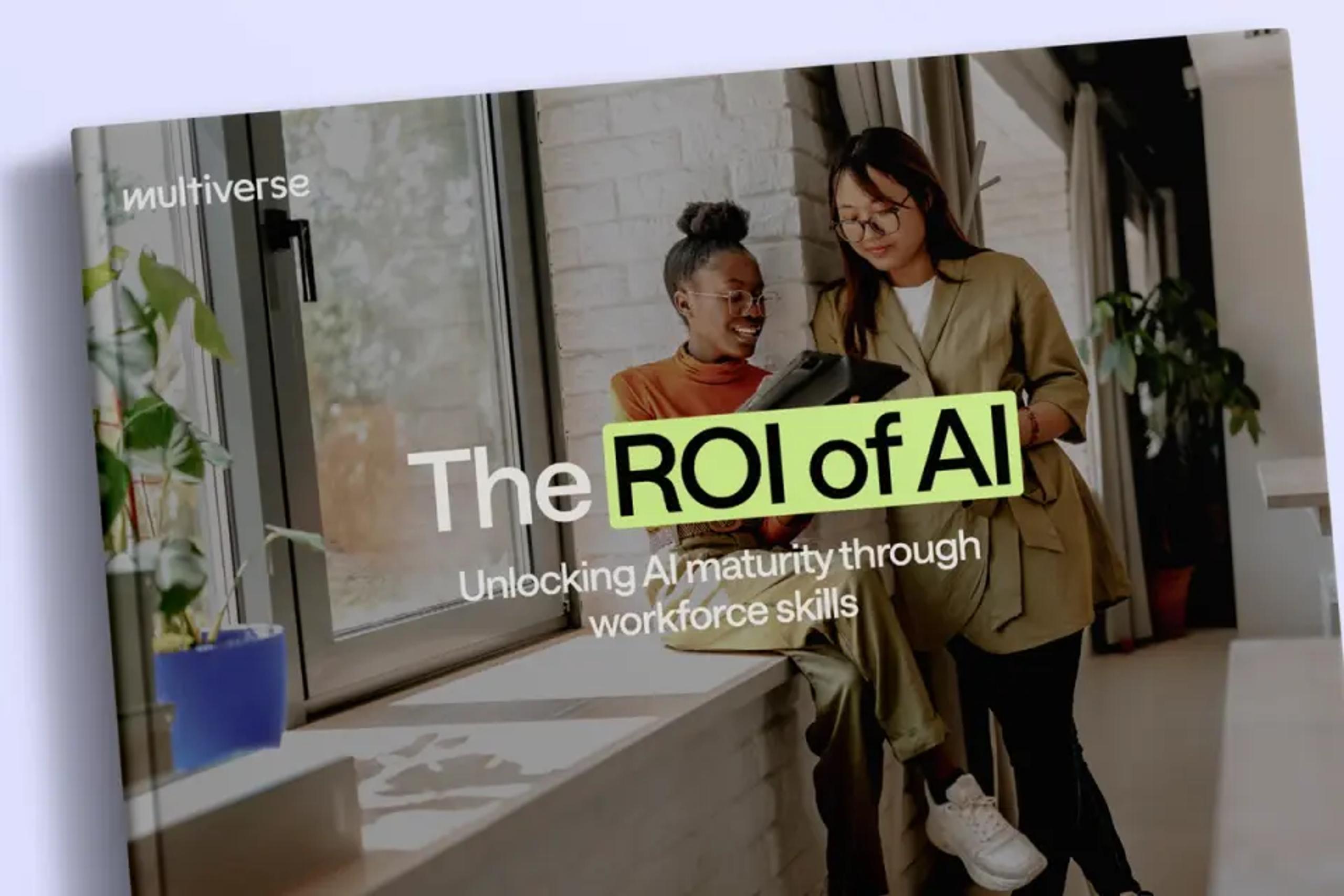With a price tag of some £50,000, university is a luxury.
"[University] never has been the right answer for everybody, and that's even more true now," says Laura Tomsett, Recruitment Advisor at Christie's.
Laura is one of a growing number of talent acquisition professionals embracing apprenticeships as an alternative to the well-trodden (and pricey) professional path. "If I were asked if I could do it all again, would I go back to uni? Honestly, I don't know if I would," she admits.
Today, there’s a growing buzz about apprenticeships. And for good reason. Apprenticeships provide a more affordable and practical option for young professionals, while helping forward-looking businesses grow their own talent, fill important skills gaps and deliver productivity gains worth over £10,000 per year(opens new window).
But let's say you're one of the talent pros who already knows that. You're ready and raring to launch your own awesome scheme and scoop up all the benefits apprentices have to offer.
The only question is: Where do you begin?
To help you get started on the right foot, we’ve identified four crucial steps to setting up a successful apprenticeship scheme.
1. Get the right kind of buy-in
We're not talking about wowing the board of with a deck of flashy PowerPoint slides. If you want your apprentices to succeed with flying colours, you need everyone from the CEO to the front line employees to be 100% on the same page about why this matters.
When Leon Wallis, Talent Acquisition Manager at Publicis Media(opens new window), told each of his business leads they were going to replace their graduate roles with apprentices, the news was met with more than a little scepticism. “People were like ‘Why are we doing this?’ But I knew it was what we needed in order to get a diverse range of candidates," Leon recalls.
Take a page from Leon's book and skip the generic round-robin email. Instead, go out and meet with staff one-on-one. And make sure you're ready to counter any objections with a compelling response.
Think about how you're going to answer the following questions:
- Why are we doing this?
- What makes these apprentices different?
- When are they going to start?
- How long will they work for us?
- How will we recruit them?
2. Run an unforgettable assessment day
Apprenticeships are a two-way street. If you want to work with the best talent a young, diverse workforce has to offer—you need to make a stellar first impression.
"We actually run a fun assessment day for candidates—we don't want it to be scary," says Laura. She and the team at Christie's ask their apprenticeship candidates to complete fun team-building tasks and invite them to meet a variety of people within the business. They also feed them great food and send them home with a goodie bag (including some seriously cute Chilly's bottles(opens new window)).
Make sure your assessment day not only gives you the chance to get to know your potential apprentices, but also leaves your candidates thinking, 'Wow, that was brilliant. I really want to work there.'
Here are a few tips to help you organise an event they'll never forget:
- Create plenty of opportunities for personal, one-on-one interaction
- Make sure your managers and coworkers show up and engage
- Look for ways you can give the candidates something of value: feedback on their CVs, interview tips, goodie bags, etc.
- Don't be afraid to break free of the 9-to-5 format if it means you'll get better engagement
- Make it fun!
3. Train your managers (not just your apprentices)
Recruiting apprentices isn't a headcount sprint.
"It's a long game," says Laura. At Christie's, Laura and her team start recruiting in September and don't close their open positions until April. And at Publicis, Leon takes a similar slow-and-steady approach. “It’s very different taking someone from a school background and dropping them straight into a 9-to-5 work environment—it can feel alien and overwhelming," he points out.
Before taking on his latest cohort of 33 apprentices, Leon made sure to get his managers apprentice-ready.
Here are a few ways you can set them up to win:
- Handpick managers who will make a positive impact on your apprentices
- Choose mentors who have the necessary bandwidth to provide ongoing support
- Prepare your managers for the transition period (some apprentices may need more support than others in the beginning)
- Help managers understand the challenges and train them to respond appropriately
4. Find the right supplier
Let's say you’re a digital marketing agency. If you choose to work with a supplier that specialises in construction, there’s an obvious mismatch, right?
Unfortunately, many apprenticeship platforms were created to meet the demands of the traditional workplace. A paradigm that, according to recent data(opens new window), is changing at lightning speed. If you want to be on the cutting edge, you need to work with a supplier that gets it.
Here are a few questions to help you find the right partner:
- Do they have have a proven record working with similar businesses?
- Do they understand the roles you’re hiring for, including the skills, knowledge and personality traits that make a good fit?
- How do they approach the screening process?
- What training and onboarding support do they provide?
- Are they honest, transparent and realistic?
"It's important to us to have apprentices who really want to be here. For WhiteHat apprentices, apprenticeships are their plan A, not their fallback plan for not getting into university," says Laura.
Ultimately, your aim is to generate excitement about your apprenticeship programme to make sure it’s fully embedded within your business. And this means both sides—employer and apprentice—must understand the value of apprenticeships. Get that part right, and you'll be well on your way to a truly stellar scheme.




